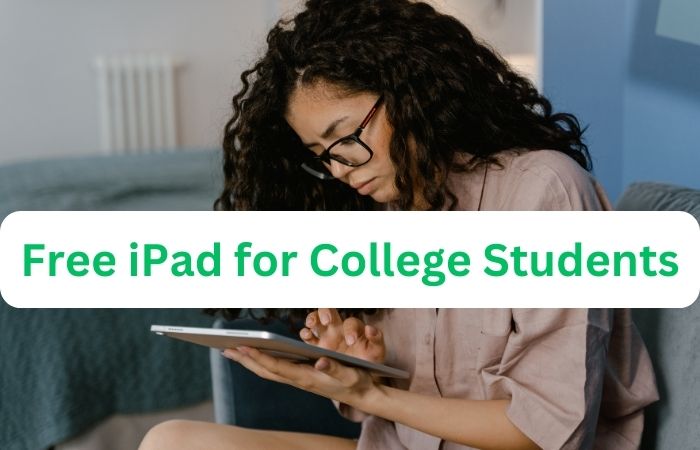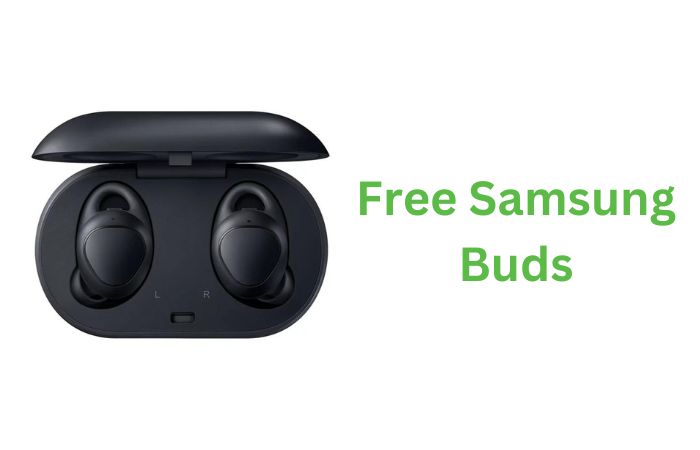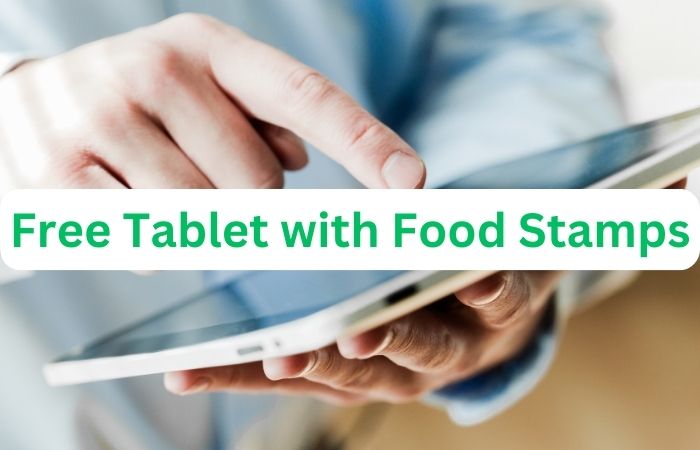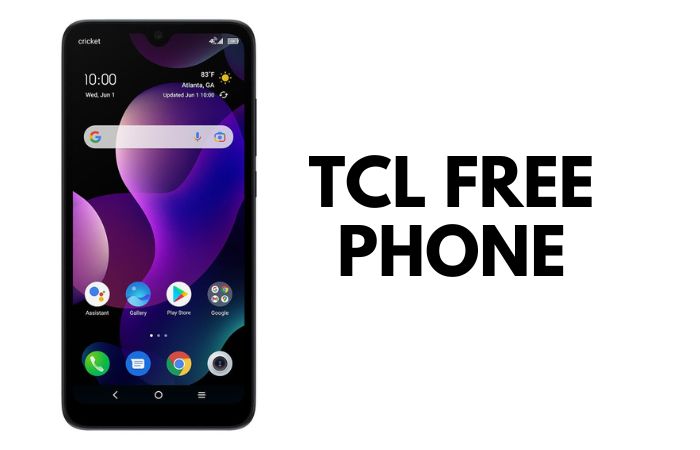Free iPad for College Students: How to Get (2024)
During my early college days, I noticed peers effortlessly using iPads while I managed with textbooks and an old laptop.
The iPad’s appeal was evident, but its cost was daunting. However, a campus flier about a free iPad program caught my eye.
Exploring this, I discovered a wealth of opportunities and the efforts of institutions to offer equal tech access.
In this article, I will narrate my personal experience of securing a Free iPad for College Students and highlight the profound impact such initiatives have on a student’s educational journey.
What Is The Free iPad for College Students Offer?
In today’s fast-paced academic environment, technology plays an indispensable role in enhancing learning experiences. Recognizing the pivotal role of devices like iPads in modern education, several initiatives have been launched to bridge the technological gap.
The primary goal behind these offers is straightforward: to assist students with their technology needs. An iPad, with its multifunctional capabilities, can significantly elevate a student’s learning process, making tasks like research, note-taking, and collaboration more efficient and interactive.
It’s heartening to see a wide array of providers stepping up to support this cause. Various educational institutions, from renowned universities to community colleges, have introduced programs to provide students with free or subsidized iPads. Additionally, several organizations, both nonprofit and corporate, have joined hands in this endeavor, ensuring that students from diverse backgrounds and financial standings have equal opportunities to benefit from this technological boom.
Top Providers of Free iPad for College Students
Navigating the world of Free iPad for College Students offers can be overwhelming, but several notable providers have made a mark with their generous initiatives. Here’s a closer look at some of the top players in this domain:
1. Apple (Education Store)
Apple, the very creator of the iPad, acknowledges the device’s significance in education. Through its Education Store, Apple extends special discounts to students, making iPads more accessible and affordable for the academic community.
2. T Mobile (Project 10 Million)
T Mobile’s ‘Project 10 Million’ is a commendable initiative aimed at bridging the digital divide. Apart from offering free internet access, the program also provides iPads to eligible students, ensuring they remain connected and equipped for online learning.
3. Sprint (1 Million Project)
Sprint’s ‘1 Million Project’ focuses on high school students, recognizing their growing technological needs. The program offers free iPads, ensuring these young learners have the tools they need to excel in their studies.
4. Newegg
Known primarily as an online electronics retailer, Newegg occasionally steps into the philanthropic realm with iPad giveaways. These events provide lucky students with the chance to secure an iPad without any cost.
5. Verizon (Innovative Learning)
Verizon’s ‘Innovative Learning’ program is a testament to the company’s commitment to education. Targeting underserved students, the initiative provides not only free iPads but also internet access, ensuring these students have both the device and connectivity required for a comprehensive learning experience.
Acquiring a Free iPad for College Students: Steps
The prospect of obtaining a free iPad is undoubtedly exciting, but it’s essential to approach the process methodically to increase your chances of success. Here’s a step-by-step guide to help you navigate this journey:
Step 1: Eligibility Verification
Before diving into the application process, it’s crucial to determine if you meet the criteria set by the providers. This often includes factors like enrollment status, financial need, and residency requirements. Ensure you fit the bill to avoid potential disappointments later.
Step 2: Program Research
With multiple providers offering free iPads, it’s essential to research and identify the programs that align best with your needs and eligibility. Delve into the specifics of each program, understand their objectives, and gauge which one offers the best fit.
Step 3: Document Preparation
Once you’ve zeroed in on a program, gather all the necessary documentation. This typically includes proof of enrollment, financial statements, and personal identification. Having these documents ready in advance can expedite the application process.
Step 4: Online Application
With your research done and documents in hand, proceed to the online application. Fill out the required forms diligently, ensuring all information provided is accurate. Attach the necessary documents and double-check everything before submission.
Step 5: Response Waiting
After submitting your application, patience is key. Providers often receive a high volume of applications, so response times can vary. While waiting, it’s a good idea to periodically check your email or the provider’s portal for updates.
Eligibility Criteria
To ensure that the free iPad programs benefit the students who need them most, providers have set specific eligibility criteria. Meeting these criteria is paramount to successfully securing an iPad. Here’s a breakdown of the common requirements:
1. College Enrollment
The primary criterion is being an active college student. Providers typically ask for proof of current enrollment, which can be in the form of a valid student ID, an acceptance letter, or a current class schedule. This ensures that the program benefits genuine students who are currently pursuing their education.
2. Residency Requirements
Many programs are region-specific, meaning they cater to students from particular states or countries. It’s essential to verify that you reside within the specified region of the provider. Proof of residency can include documents like a utility bill, a lease agreement, or a driver’s license.
3. Income Guidelines
Given that these programs aim to assist students facing financial challenges, there are often income guidelines in place. Applicants might need to demonstrate that their household income falls below a certain threshold. This can be verified using documents such as recent pay stubs, tax returns, or letters confirming government assistance.
Required Documentation
To streamline the application process and ensure transparency, providers of free iPad programs typically require applicants to submit specific documents. These documents validate the claims made during the application and help in the decision-making process. Here’s a breakdown of the commonly required documentation:
1. Enrollment Proof
This is to confirm that you are indeed an active student in a college or university. Acceptable documents can include:
- A valid student ID card with a visible expiration date.
- An official enrollment or acceptance letter from the institution.
- A current class schedule or transcript indicating active status.
2. Income Verification:
To ascertain that you fall within the program’s financial guidelines, you’ll need to provide evidence of your household’s income. This can be in the form of:
- Recent pay stubs showcasing monthly or yearly earnings.
- A tax return document indicating annual income.
- Official letters or certificates indicating eligibility for financial aid, scholarships, or government assistance programs.
3. Residency Proof:
This confirms that you reside within the region or area specified by the program. Acceptable documents can include:
- A recent utility bill (electricity, water, or gas) with your name and address.
- A rental agreement or lease showcasing your current address.
- A bank or credit card statement with a visible address.
4. Personal ID:
A government-issued identification is required to verify your identity. This can be:
- A driver’s license.
- A passport.
- A state or national ID card.
Popular iPad Models for College Students
Apple’s iPad lineup has evolved over the years, offering a range of devices tailored to various needs and preferences. For students, certain models stand out due to their blend of performance, portability, and price. Here’s a look at the most popular iPad models that have become favorites among the student community:
1. iPad (9th Gen)
The standard iPad remains a top choice for many students. The 9th generation brings enhanced performance, making it ideal for note-taking, research, and multimedia consumption. Its affordability combined with robust features makes it a go-to for those seeking value and functionality.
2. iPad Air (4th Gen)
The iPad Air offers a perfect balance between the standard iPad and the more premium iPad Pro. With a sleeker design, more vibrant display, and enhanced processing power, the 4th Gen iPad Air is suitable for students who require a bit more from their device, be it for design projects or intensive multitasking.
3. iPad mini (5th Gen):
For students who prioritize portability, the iPad mini is a gem. The 5th generation model packs a punch in terms of performance, ensuring that its compact size doesn’t compromise on capability. It’s perfect for reading, on-the-go note-taking, and fits easily into smaller bags.
4. iPad Pro (11-inch & 12.9-inch):
The iPad Pro is the powerhouse of the lineup. Available in two sizes, it caters to students who need top-tier performance, be it for graphic design, video editing, or other demanding tasks. With its ProMotion technology and compatibility with the Apple Pencil, it’s a favorite among art and design students.
Frequently Asked Questions (FAQs)
Is an iPad sufficient for college?
Absolutely. For many students, an iPad can handle a majority of college tasks, from note-taking and research to writing essays and creating presentations. With the vast array of apps available, students can tailor their iPad to their specific needs. However, certain specialized courses or majors might require software that’s exclusive to desktops or laptops. It’s always a good idea to check with your course requirements.
Are there free iPad programs available for senior students?
Yes, while many programs target undergraduates or specific age groups, there are initiatives that cater to senior students or lifelong learners. Some institutions and organizations recognize the importance of technology for all age groups and offer programs accordingly. It’s advisable to research specific programs or reach out to educational institutions to inquire about opportunities for seniors.
How can I avoid scams when looking for free iPad programs?
Caution is key. Always ensure that you’re dealing with reputable institutions or organizations. Here are some tips:
- Avoid offers that seem too good to be true or ask for unnecessary personal information.
- Research the offering institution or organization thoroughly. Look for reviews or testimonials.
- Be wary of unsolicited emails or messages claiming to offer free iPads.
- Always use official websites or channels to apply or gather information.
If in doubt, reach out directly to the institution or organization to verify the authenticity of the offer.
Conclusion
In an era where technology is intertwined with education, the significance of initiatives like Free iPad for College Students programs cannot be understated. These programs are not just about providing students with gadgets; they represent a concerted effort to bridge the digital divide. By ensuring that every student, regardless of their financial background, has access to essential technological tools, we are taking a step towards a more inclusive and equitable educational landscape.
For students, these programs are a golden opportunity, a chance to level the playing field. But it’s not just about receiving; it’s about maximizing the potential of these tools. With the world’s information at their fingertips, students are encouraged to leverage these resources to their fullest, to explore, learn, and innovate.
As we reflect on the profound impact of such initiatives, it’s a call to action for students everywhere: Seize these opportunities, harness the power of technology, and pave the way for a brighter, more informed future.






